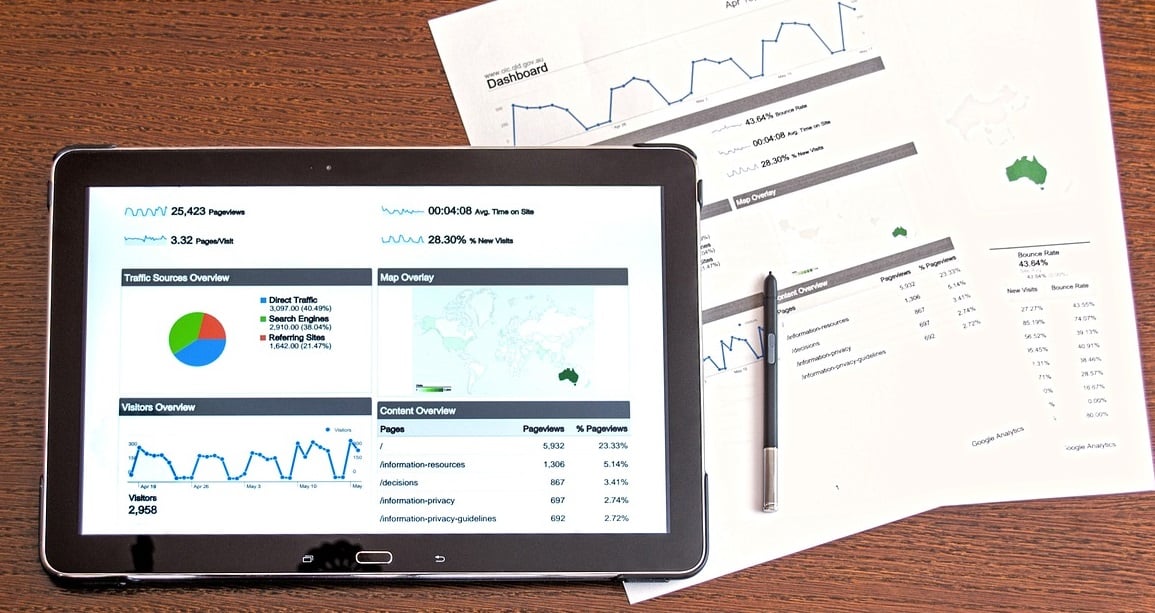
You work hard for every dollar you earn in your business. The last thing you want is to waste it on hit-and-miss advertising or marketing campaigns. You need to make sure your investment in marketing is working for you and giving you the greatest possible return.
As you plan, measure and track your marketing efforts, you will learn what works (and doesn’t) for your business. Then you can focus your efforts on the right type of marketing to generate the best results.
Here are five easy steps that will help you get the maximum return on your marketing dollar.
1. Really get to know your customers
The first place to start any smart marketing campaign is to get to know the people who already buy your products. The more you know about them, the easier it will be to find more just like them!
When it comes to researching your customers you can never have too much information. You will know how best to approach your research; a customer satisfaction survey, focus group, a poll or competition. Find out why they buy your product, how they use it, what they like and what could be improved and make sure you enter that valuable data into your CRM.
Many customers won’t mind giving you the information freely, but consider offering an incentive such as a gift or a special offer. Research can be done online, over the phone, in store or even face-to-face. The information will be extremely valuable and may even surprise you.
2. Drill down to identify your target markets
Next, learn how to find the specific market segments you want to reach. If you try to reach your whole market you will be wasting your money. Remember your target markets are not your core market. Whilst your core customer base typically remains stable, your marketing targets shift depending on your strategy and goals.
Spend the time to evaluate your market and define the customer segment you need to reach for each specific promotion, event, sale or offer. That way you’ll avoid the dangers of one-size-fits-all marketing. You might consider targeting by demographic, average spend (or estimated spend) or even by usage - heavy, light and occasional. It all depends on the nature of your product or service.
Targeting specific market segments allows you to customise your message to that particular customer type. This approach is more likely to ‘speak’ to them and initiate a response.
3. Be sure to quantify your success
Whilst it’s important to learn about your customers and target them, it’s just as important to know when you have reached them. In the case of your marketing dollar, if you don’t know what you want to achieve then you may as well throw your money out the window. Make sure you clearly define the desired end result and set expectations based on the particular marketing you choose.
For example, you might set a marketing goal that is measured by enquiries, lead conversions, sales revenue or add-on sales. It might be a specific number of new customers within a certain period of time or a number of inbound calls from a particular geographic area. Success could also mean a shift in consumer perceptions or deeper customer satisfaction.
Make sure you track your customers (or potential customers) throughout the process. Too often a business will spend a fortune on a marketing campaign and forget to set up a way to clearly monitor what brought customers to the business.
If you’re unsure of what results to expect from a particular marketing campaign, you can turn to sources such as industry groups, small business mentors or marketing agencies for advice.
4. Calculate the return on your marketing investment
The ROI on your marketing spend is just as important as any other ROI in your business. Take time to compare the cost of a proposed marketing campaign against the profit you expect to make from it. That’s the actual profit, not the sales.
Do the math based on the cost of the product or service you are marketing and the price of the marketing campaign. If a small newspaper ad costs $200 and attracts 20 new clients who each spend $100 (with a profit of $50) that’s a pretty good ROI - $200 investment to make a profit of $1000. Also consider the lifetime value of those customers. How much will they spend in the time they are with you – be that one day or over many years? That increases your ROI exponentially!
Once you have your ROI worked out, think about ways to make the process more cost effective. For example, can you create a greater ROI by offering additional products at point of sale? You will eventually get to know the best marketing vehicles to use to get the greatest return on your investment.
5. Track the results and adjust your strategy
The final step is to track your results. Capture as much data as you can. Analyse your sales reports, financials and customer database to discover what’s working — and what isn’t. Armed with that information you can then customise your marketing strategy moving forward.
Be sure to keep testing, measuring and refining the process. Change your tactics and messages until you hit that target. You can eventually build up to larger, more expensive marketing if you put in the ground work early on with low-cost low-effort experiments.
At the end of the day, there’s a very simple rule to keep in mind when deciding whether a marketing campaign has been effective. If you’re spending more money on marketing than the business it is generating, then stop, reassess and start a new campaign.
For more business and marketing tips to help you work smarter not harder in your business, contact Bartercard Australia.


